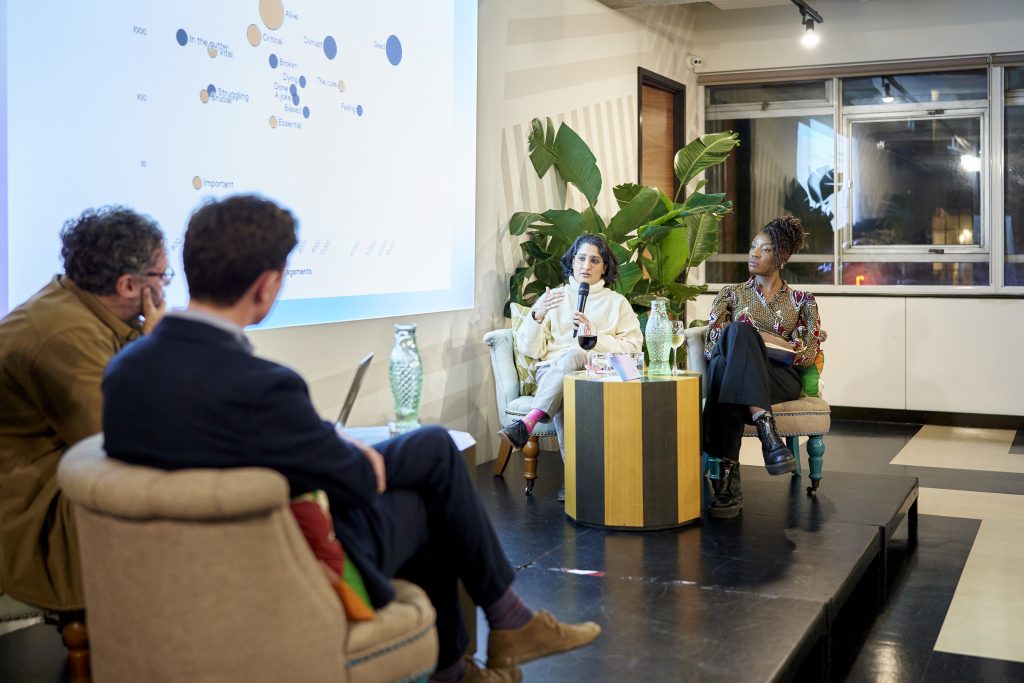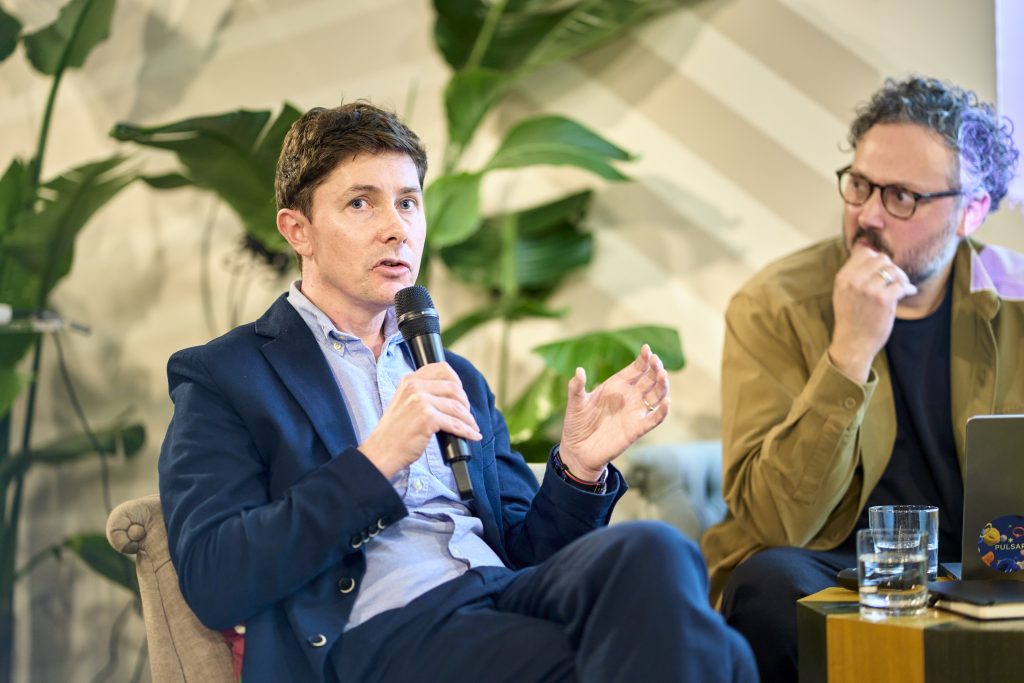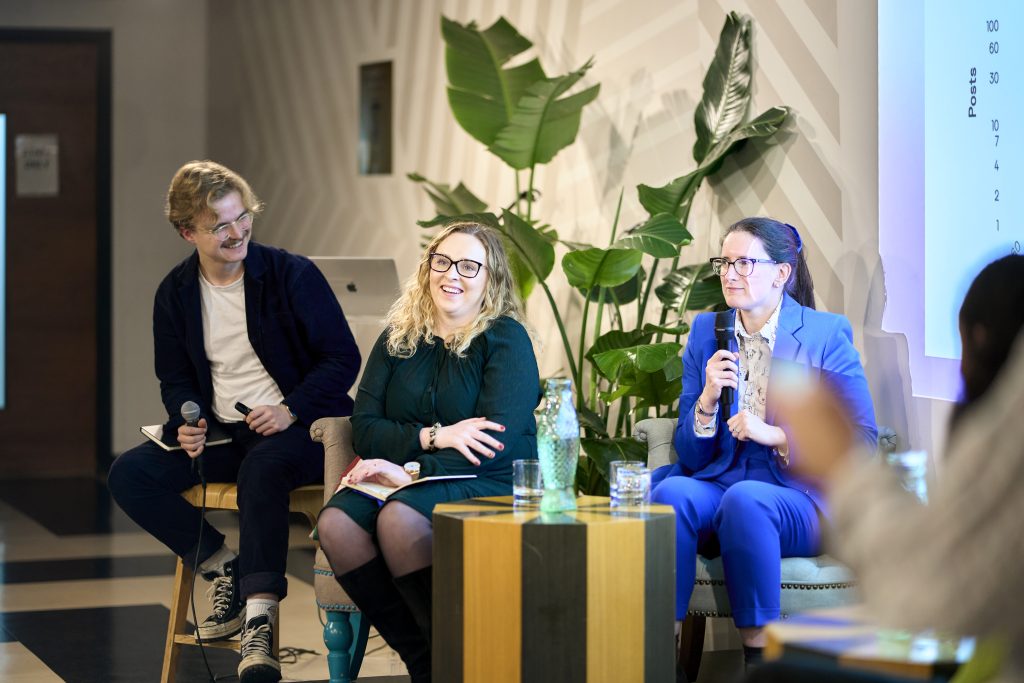Journalism in the Platform Era – London Event
- Media
How are journalism and news media evolving to meet the changing needs and behaviors of audiences? And what does this mean for those tasked with navigating the media landscape on a daily basis?
On November 13th, we looked to answer these questions along with two panels of expert industry speakers, and a packed venue full of PRs, marketers and media professionals.

In Journalism in the Platform Era: Audience Perceptions, Brands & Behaviors, Pulsar founder Francesco D’Orazio was joined by Tini Sevak (Vice President of Audiences & Data at CNN International Commercial), Tom Wainwright (Media Editor at The Economist) and Kamilah McInnis (Journalist at BBC News)
This panel examined the challenges faced by media organizations today, from the growing behavior around ‘news avoidance' to the perennial question of ‘who pays for the news’?

In the midst of what can appear at times an increasingly inflamed media environment, Tini Sevak underlined the value of authenticity.
'When you've got a brand that stands for something, you have a relationship with your audience. It's about giving back to your audience - news has to be a reflection of life. Hard news, but also culture - reflecting what life is about'.
And while the pitch of the conversations taking place around journalism might give some partner brands pause before making ad buys, news brands who are able to quantify the nature of audience reaction, and chart a path for partners, stand to unlock commercial opportunities that can underpin the civic aspects of their remit.
‘The brand safety aspect is very real. Ads within news doesn't have to be a detriment to your brand. There's an opportunity to engage with a tuned-in audience'
Elsewhere Tom Wainwright weighed up the pros and cons of different types of publication attracting different audiences - and forging different relationships with such audiences.
‘Organizations that focus more on subscriptions are more likely to go niche. The New York Times has shifted to a subscription model and is aiming to be more in tune with their readers - for the good and bad.
‘If you’re funded by advertising, however, you’ll be more generalized and centrist. With subscriptions, readers want to engage with content they agree with. The way publications respond to that dilemma depends on their business model’.

None of which is to suggest news media organizations are infallible, of course. But as Kamilah McInnis emphasized, addressing errors head on can itself be a key tool in re-engaging audiences.
‘Organizations should apologize when mistakes are made, listen to audiences and be consistent to rebuild trust. Respond to what audiences need. And remember that they also tune in for escapism and analysis.’
If you’d like to explore more of our research into media brands – and in particular, how they leverage journalism as brand equity – you can do so in our latest report.
In our other panel on the day – The New News: Reaching Audiences with Journalism Today, from TikTok to Podcasts to Local Journalism – Pulsar’s Alex Bryson hosted a panel including Charlie Beckett (Founding Director at Polis and Director, The Journalism AI Project, both based out of the London School of Economics), Charlotte Tobitt (UK Editor at Press Gazette), Siham Ali (Journalist at ITV News) and Amy Chappell (Head of Insights at Vuelio).

‘Audiences have a lot of agency - they consume “fake news” because they want to,’ Charlie Beckett shared. 'People are driven by identity and emotions, by fear - they choose to consume what panders and pays attention to fears they have.'
Charlie also shared a more positive manifestation of this agency – namely, audiences' ability to curate their own news sources across mediums, platforms and brands, and so create an experience engineered to their own preferences.
Of course, the boundaries between these mediums rarely remain unyielding for very long.
‘[The podcasting format] is infecting ‘traditional’ broadcasting and making it more casual,’ believes Charlie. ‘And they aren’t much different - they’re merging.'
A similar kind of merging is taking place over on TikTok, as the news industry wakes up to its possibilities for audience-building.
‘The news industry was slow to TikTok, and then a few individual journalists picked it up,’ said Charlotte Tobitt. ‘The Daily Mail is now one of the biggest news publications on TikTok, and it's a good thing for the longevity of the brand. People were hesitant initially because the monetisation wasn’t there. But for brand building, it’s worth it. The TikTok algorithm is so good that the right stuff should find the right people.’

All of this spells change for PRs, marketers and anyone else looking to communicate via a constantly shifting array of platforms. The potential implications for strategic decision-making – including media buying, influencer outreach, which platforms to cultivate audiences on (and which to ignore), and much more besides – are enormous. But there are also more tactical decisions which can be made right now, with an eye on the fluctuating media environment.
‘I used to work in PR,’ said Siham. 'And we didn’t think to add vertical assets - there’s a lot of potential in that space – show that your content is multiplatform.’
And multi-platform can also mean thinking social (and audience) first.
‘I’ve seen politicians doing interviews directly with social teams, and not the digital news teams.’
If you’re interested in exploring the audience data behind several of the topics here, from TikTok Journalism to Podcasts as part of the news cycle, you can do so here on the Pulsar site.
For more insights, from the world of media as well as behavioral and trend data from myriad different categories, you can sign up to our regular insights newsletter using the link below.


